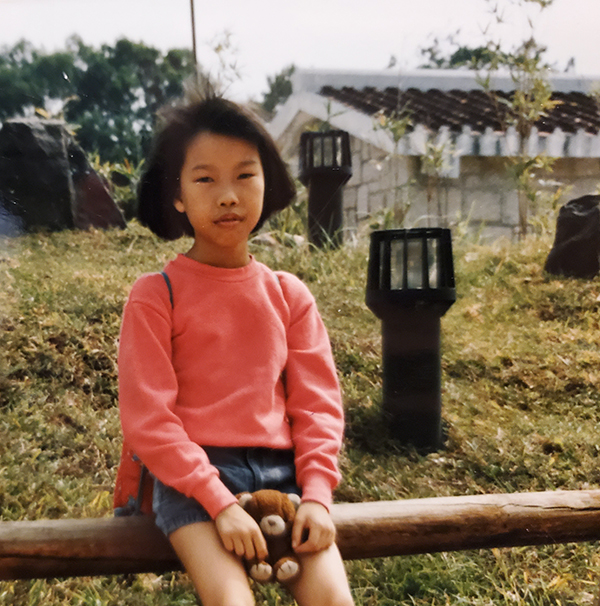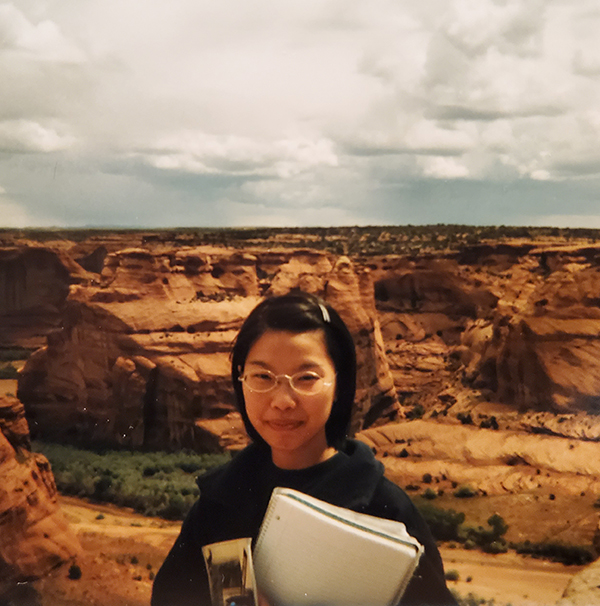My STEM Journey
Oh So Cold Canada
I looked out the window of the 747 jumbo jet carrying my family over 10,000 km from Hong Kong to our new home in Calgary, Alberta. The snow was blowing fiercely outside the small round window. I’d never seen snow in all my 10 years and this was my first time on an airplane. When I finally made it to the door of the plane to disembark, the bitter cold wind coming in through the large gap had me frozen at a standstill. I turned to look nervously at my mom and she urged me to take my first step: one that would begin our new journey into Canada.
Wide Open Spaces
When I started school in Calgary, there were only a handful of Chinese students and no Asian staff at the school. My classmates were eager to help, but learning English was a frustrating process. My Grade 4 teacher liked math and science, and even with my limited English, she made sure I could still participate in our class activities. Unlike the school grounds in Hong Kong, my school here had a large green space with playground equipment. We spent a great deal of time outside learning about plants, animals and their habitat. My favourite part was creating and caring for our own terrarium, and I remember a math class where we played kickball in the snow. Our teacher would lead us around in a circle and we would create dividing lines to help us solidify concepts from the fraction unit. There were also building and design-type challenges that I quite enjoyed. I think seeing math, science and engineering concepts in everyday life and being outdoors ignited my initial spark for STEM.


A Brush with Greatness
My interest in STEM continued in secondary school. I was selected in an essay-writing contest to attend an event hosted by the Royal Society of Canada in partnership with the University of Calgary. It was through this event that I was able to meet Physics Nobel laureate, Dr. Richard Taylor. He shared the 1990 Nobel prize with Jerome Friedman and Henry Kendall of MIT for research, while working at the Stanford Linear Accelerator Center (SLAC) in California. This research led to the experimental evidence of quarks and gluons: elementary particles inside the atom. I had just heard him speak at a session and was surprised to find him right next to me in the buffet line. He invited me to sit with him at the lunch table. He told me stories of him growing up on a farm in Medicine Hat, Alberta. He explained how he came to lose a few digits on his hand from a farm machinery accident. He talked about how he struggled in school at first, receiving some 60% grades, but eventually, he found his niche in STEM. Meeting him was an experience of a lifetime and I will never forget his kindness!
STEM is Everywhere
While pursuing a specialist in Environmental Science at the University of Toronto and subsequently a B.Ed at Ontario Institute for Studies in Education (OISE), I obtained work experience in a variety of co-op and internship positions. I worked as an environmental assessor at a non-profit, a car plant as an emissions reduction specialist, at the Air Quality Research Branch of Environment Canada (Downsview) as a research assistant, and taught science programming at the Ontario Science Centre. These experiences taught me the value of real-life STEM experiences, especially for students in the classroom, and I wanted an opportunity to share these experiences with them.
A Tiny Ripple in the Sea
The year I began teaching over 20 years ago, the school hired three new math and science teachers: all women and two of Asian descent, which was quite a change from the two recent retirees from the department. That year, a colleague of mine suggested a wonderful idea of asking students to draw what a scientist looked like. The first few years, the drawings were of white men in lab coats. Over the next several years, there emerged drawings of both men and women. Some students drew portraits of myself and my colleagues, but most importantly, many started to draw a reflection of themselves. We couldn’t help but wonder: did our representation have something to do with that? Perhaps the tides were turning and we would see more diversity in STEM. Nowadays, it’s thrilling to have former students return to tell me they are working in a STEM-related field.
Let’s Talk Science
I am a combination of all these experiences in my role as an education specialist on the digital development team at Let’s Talk Science. Because of that, developing accessible and inclusive STEM resources for educators and students is very important to me. Canada is a diverse mix of people from all around the world, living on a wide-ranging landscape. We want students to be able to learn and connect with new knowledge, technology and careers. While at Let’s Talk Science, I have valued the opportunities to share my experiences and celebrate my culture and heritage with my colleagues, and I hope that we can continue to break down barriers as we look towards the future.
- Mazy Leung, Educational Specialist, Digital Development Team
